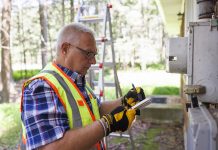The following op-ed from David Holt, President of Consumer Energy Alliance, appeared on The Daily Caller website here.
May 17, 2010 As we are still sifting through all of the information about the causes of the tragic Deepwater Horizon incident in the Gulf of Mexico, experts are tirelessly working around the clock to contain the spill and clean-up the affected area. Americans rightfully expect all appropriate actions to be taken to move forward and repair the Gulf Coast following this tragic accident – including learning what went wrong to ensure that this never happens again – as we have done in the past and will continue to do in the future.
Clearly this rare accident was not an inevitable byproduct of oil production and Americans shouldn’t rush to judgment on offshore energy production. We should focus on: 1) finding out what went wrong; 2) fixing it and ensuring that it never happens again; and 3) determining the appropriate path forward.
Despite this tragic incident, the facts on offshore production still remain the same – America needs more oil and natural gas supplies to meet the demand in the coming decades and significant gains will continue to be made in developing new technologies to explore and develop our own energy resources.
In the same way that this accident in the Gulf is unacceptable, our country’s current energy situation – where we import well over half the oil we consume — is simply unsustainable. If Americans are serious about developing their own energy resources and reducing dependency on foreign imports, offshore production must be part of the solution. In fact, unless we want to import more than 80 percent of our oil (and all of the geopolitical risks that come with that),we must find a safe and efficient way to continue to develop our offshore resources.
Offshore production is a significant source of oil and gas for the United States. According to the Minerals Management Service, approximately 43 million leased acres along the nation’s Outer Continental Shelf account for about 15 percent of America’s natural gas production and 27 percent of America’s oil production. Each year, those efforts help produce an average of 600 million barrels of oil and 4.5 trillion cubic feet of natural gas. How much is that? Well, in comparison the United States imports roughly 550,000 million barrels of oil each year from Saudi Arabia.
Recent estimates indicate there could be as much as 3.8 billion barrels of oil and 21.5 trillion cubic feet of natural gas in the eastern Gulf and another 3.8 billion barrels of oil and 15.1 trillion cubic feet of natural gas on the Atlantic coastline between Delaware and Florida. However, if some in Congress get their way and a new moratorium is instituted, all of that American energy will be inaccessible and our nation’s energy security and economy will continue to be left to the whims of foreign, unstable governments that do not have America’s best interests in mind.
At Consumer Energy Alliance, a broad alliance of both traditional and renewable sources of power, we support a diverse energy sector in which our power is derived from oil and gas, solar and wind. However, even under the best case scenario, in which wind and solar and all the other renewable power sources meet their most optimistic growth projections, we know that fossil fuels will be essential to everyday life for decades to come.
While we recognize that there are no easy answers to the country’s energy demands, we do know that oil and gas are the fuels that power our nation’s economy. They enable us to drive to work each day and travel long distances, as well as provide energy for business and commerce, manufacturing and countless other industries. Without oil and gas, the entire U.S. economy would come to a grinding halt.
Unfortunately, opponents of domestic energy production are now using this tragic accident to enact a new moratorium on offshore energy production that will only cause more economic harm to our country. Clearly, both energy production safety and the national security that comes from a strong domestic oil sector are necessary to help Americans shed their dependence on foreign energy. Instead of saying no to domestic energy, we must instead commit to producing more of our own vast oil reserves with the highest standards of safety and accountability in oil production.
While you may hear over the next few weeks that it is easier to further limit domestic energy production in the U.S., remember that blocking new oil and gas exploration will only send more ocean tankers carrying foreign oil toward our coasts. Instead of giving up on another vital American industry because they are facing tremendous challenges, Americans must bravely face this difficult time and commit to the harder work of building responsible, reliable – and above all, safe – domestic energy resources.








 Did you know that many states are running programs that give Americans rebates on purchasing new energy efficient appliances for their homes? The deal is – only purchases that replace an existing appliance are eligible for a rebate, which range in benefit from $50 to $500. So get rid of that old energy-wasting fridge and upgrade to a new one that saves both energy and money!
Did you know that many states are running programs that give Americans rebates on purchasing new energy efficient appliances for their homes? The deal is – only purchases that replace an existing appliance are eligible for a rebate, which range in benefit from $50 to $500. So get rid of that old energy-wasting fridge and upgrade to a new one that saves both energy and money!



